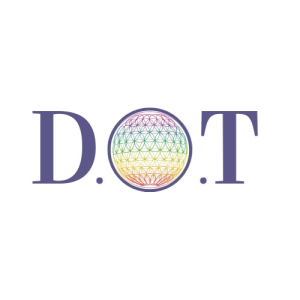Development Over Time Admin
Blog entry by Development Over Time Admin

Blockchain Awareness in Academia, Education, and Think Tanks: Addressing Barriers and Unlocking Potential
Author: Clarissa Terracciano
Date: January 18, 2025
Blockchain technology has been heralded as a revolutionary tool, poised to reshape how industries operate. However, while sectors like finance and healthcare have made strides in exploring its potential, its integration into academia, education, and think tanks has been more tentative. Barriers such as limited understanding, lack of resources, and hesitation to adopt unfamiliar systems have slowed progress.
Despite these challenges, blockchain presents realistic and achievable opportunities for improving education, from secure and verifiable credentials to streamlined data management. By approaching adoption with pragmatism and focusing on tangible benefits, academia and education can start addressing their unique challenges while capitalizing on blockchain's promise.
Understanding Blockchain’s Potential
Practical Applications in Education
Blockchain’s core features—decentralization, transparency, and immutability—make it particularly suited for addressing longstanding inefficiencies in education. Unlike grandiose claims of wholesale revolution, the following practical applications demonstrate how blockchain can realistically improve education:
-
Credentialing and Verification
Blockchain-based systems can securely store and verify academic credentials. For example, transcripts and diplomas recorded on a blockchain would eliminate the need for manual verification, saving time for both institutions and employers. -
Fraud Prevention
Counterfeit degrees and manipulated transcripts are persistent issues in academia. Blockchain’s tamper-evident nature ensures that records are immutable and trustworthy. -
Data Portability
Students transferring schools or applying abroad often face delays in retrieving and verifying academic records. Blockchain could facilitate instant, secure access to verified records across institutions. -
Micro-Credentialing
As online learning grows, so does the need for validating skills learned outside traditional degree programs. Blockchain can enable trusted digital badges and certificates to represent these achievements.
Lessons from Other Sectors
Healthcare: A Case Study in Gradual Adoption
The healthcare industry offers valuable lessons about measured and realistic adoption. By 2025, 55% of healthcare applications are projected to use blockchain technology, focusing on key areas like data security (47%), process automation (45%), and interoperability (41%) (Frost & Sullivan, 2022).
Yet, adoption has been slower than expected due to barriers like knowledge gaps. In 2017, 84% of U.S. healthcare administrators were unaware of blockchain, despite its potential to improve patient records and reduce fraud (MGMA, 2018). This illustrates the importance of investing in education and pilot programs to gradually build trust and understanding—a lesson that education leaders can take to heart.
Awareness Challenges in Malaysia
Awareness doesn’t always translate to sustained adoption. In Malaysia, blockchain awareness peaked at 76% in Q3 2021, only to drop to 55% by Q4 2022 (Oppotus, 2023). The decline underscores that without continuous efforts to engage stakeholders and demonstrate practical benefits, initial enthusiasm can fade.
Barriers to Adoption in Education
Realistically, adopting blockchain in education faces challenges that require incremental solutions:
-
Limited Understanding of Opportunities
A 2020 survey found that 68.2% of respondents identified insufficient understanding as a major barrier to adopting new technologies in education (World Economic Forum, 2024). For blockchain, this often stems from misconceptions that it is overly complex or only relevant for cryptocurrency. -
Resource Constraints
Schools and universities often lack the financial resources to invest in new technologies, with 50% citing a shortage of capital as a barrier (World Economic Forum, 2024). -
Skills Gaps Among Leadership
Leadership hesitation—due to a lack of blockchain expertise—was cited by 45.5% of respondents as a barrier, further slowing institutional adoption. -
Regulatory Hurdles
Outdated education policies often fail to accommodate innovative solutions like blockchain, adding further complexity to its implementation.
Realistic Strategies for Adoption
-
Start Small with Pilot Projects
Pilot programs focused on specific applications, such as credential verification or micro-credentialing, can demonstrate value without requiring significant upfront investment. For example, universities could partner with blockchain startups to test systems for secure transcript storage. -
Invest in Professional Development
To bridge the skills gap, institutions can offer blockchain training for administrators and educators, equipping them with the knowledge needed to evaluate and implement the technology. -
Foster Industry Collaboration
Collaboration with blockchain experts and technology providers can help schools access resources and expertise, reducing costs and easing adoption. -
Advocate for Policy Modernization
Governments and regulatory bodies need to update education policies to accommodate blockchain while ensuring ethical standards are met.
Conclusion
Blockchain in education isn’t about sweeping overnight change. It’s about realistic, step-by-step progress that addresses inefficiencies and builds trust. By learning from other sectors, starting small, and addressing barriers head-on, academia and education can begin to reap the tangible benefits of blockchain—secure credentials, streamlined processes, and enhanced trust.
As adoption grows, so will the opportunities for institutions to innovate and adapt to an increasingly digital world. The key lies in approaching blockchain not as a lofty ideal but as a practical tool for solving real-world problems in education.
Call to Action
Are you ready to explore how blockchain can benefit your institution? Advocate for pilot programs, support professional development, or initiate discussions with stakeholders. Together, we can make blockchain a practical solution for education.
Tags
Blockchain Technology, Education, Credentialing, Barriers to Adoption, Trust, Realistic Solutions
About the Author
Clarissa Terracciano is an experienced educator, educational consultant, and researcher specializing in blockchain technology and its transformative impact on education. Clarissa holds a BA in Psychology from CUNY Hunter College, an MA in Inclusive and Special Education from Teachers College, Columbia University, and is currently completing her PhD in Educational Leadership and Policy Studies at the University of Denver. She is committed to advancing equitable access to education through technology-driven approaches.
References
- Kumar, N., Singh, M., Upreti, K., & Mohan, D. (2022). Blockchain adoption intention in higher education: Role of trust, perceived security, and privacy in technology adoption model. Springer. https://doi.org/10.1007/978-3-030-82616-1_27
- Frost & Sullivan. (2022). Projected share of healthcare blockchain adoption across healthcare applications worldwide in 2017, 2020, and 2025. Statista.
- MGMA. (2018). Awareness about blockchain technology in the U.S. among medical practice administrators and executives as of 2017. Statista.
- Oppotus. (2023). Awareness of blockchain in Malaysia from Q3 2019 to Q4 2022. Statista.
- World Economic Forum. (2024). Perceived barriers to the adoption of new technologies in the education industry worldwide in 2020. Statista.
